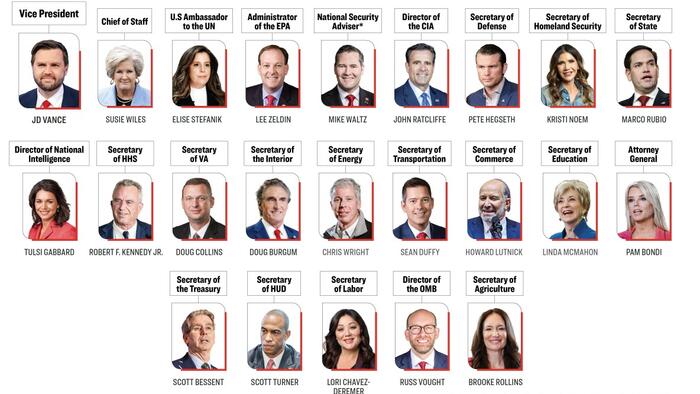In a rapidly progressing transition towards the inauguration of Donald J. Trump as President, the selection of his Cabinet marks a significant shift, largely influenced by young professionals from the business world. Transition Chief of Staff Susie Wiles announced the completion of the Cabinet on November 26, revealing a lineup that is notably leaner on the traditional GOP establishment compared to Trump’s first Cabinet in 2016. The incoming administration’s gender representation is also noteworthy, with eight out of 25 nominations designated for women. This swift transition, which saw nearly all Cabinet-level positions filled within three weeks of the election, contrasts significantly with the prolonged assembly of Trump’s previous Cabinet, where key appointments like Secretary of State Rex Tillerson and Secretary of Veterans Affairs David Shulkin weren’t finalized until well into January 2017.
The incoming Trump administration is set to face complex international challenges, including ongoing conflicts in the Middle East, escalating tensions in Ukraine, and growing military competition with China. With the Biden administration having recently activated a contentious approval for Ukraine to utilize long-range American missiles against Russia, the geopolitical landscape is poised for shifts. Major figures in Trump’s national security team, including Senator Marco Rubio, CIA nominee John Ratcliffe, and national security adviser pick Rep. Michael Waltz, are known for their hardline stance on China, raising alarms about the emerging threats posed by Chinese military expansion.
Economic priorities will also play a central role in Trump’s agenda with the selection of key figures in the Treasury and Commerce departments. Billionaires Scott Bessent and Howard Lutnick join the Cabinet to tackle fiscal responsibilities and support trade initiatives, respectively. Trump’s aim is to solidify his earlier tax reforms and potentially expand tariffs, particularly against China. Lutnick has expressed confidence in a dual approach where tariffs could not only generate revenue but also stimulate U.S. productivity. Meanwhile, Bessent emphasizes the need for economic growth to address the national debt crisis, advocating for strategies that bolster domestic production.
The announcement of Trump’s Cabinet was not devoid of controversy, evidenced by the recent withdrawal of former Rep. Matt Gaetz as attorney general amidst ethical scrutiny. His replacement, Florida Attorney General Pam Bondi, has quickly stepped into the role. Additionally, selections such as Robert F. Kennedy Jr. for Health and Human Services and Dr. Marty Makary for the Food and Drug Administration signal a potential shift in health policy, particularly concerning criticisms of the pharmaceutical industry and vaccine mandates. These high-profile appointments reflect Trump’s campaign slogan of “Make America Healthy Again,” and pledge a departure from the previous administration’s public health strategies.
Energy policy, another focal point, will see a strategic overhaul under Trump’s leadership, with the establishment of a National Energy Council led by figures from the private sector like North Dakota Governor Doug Burgum. This council aims to enhance U.S. energy independence by promoting innovation and reducing regulatory barriers. Coupling energy initiatives with a focus on reducing reliance on adversarial nations signifies that energy will also intersect heavily with foreign policy considerations.
Despite the infusion of new talent, Trump’s Cabinet remains intertwined with familiar figures from his first term, ensuring some continuity within the administration’s framework. Notably, individuals like Russ Vought and Kristi Noem exemplify this blend of familiarity and novelty, bridging traditional Republican values with the evolving policy demands of the Trump-era GOP. The diverse array of nominees, including former Democrats such as Tulsi Gabbard and Robert F. Kennedy Jr., underscores an attempt to shift the party’s ideological underpinnings while acknowledging a broader constituency. Concerns over Senate confirmations loom over several nominations, hinting at possible challenges ahead as Trump re-establishes his governance approach in a divided political landscape.

